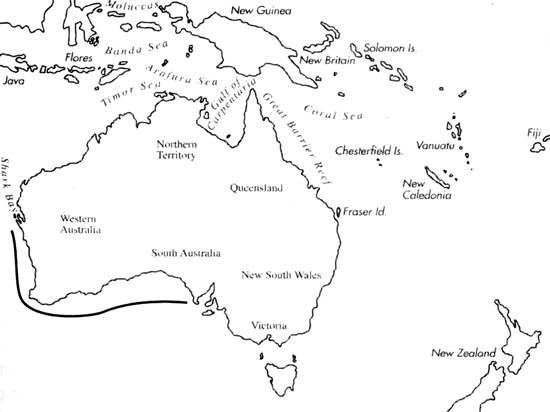
Skip Navigation Links
View access keys for this site.

Range: Western S. Australia to Houtman Abrolhos, W. Australia.
Description: Medium-sized to large, moderately solid to solid. Last whorl ventricosely conical, sometimes conical or slightly pyriform; outline convex adapically, straight or sometimes slightly concave below; left side usually concave near base. Shoulder angulate. Spire usually of moderate height, stepped; outline concave to slightly convex. Maximum diameter of larval shell about 0.8 mm. Early postnuclear whorls tuberculate. Teleoconch sutural ramps concave; 5-6 increasing to 7-10 spiral grooves on late ramps. Last whorl with a few widely spaced weak spiral ribs near base.
| Shell Morphometry | ||
|---|---|---|
| L | 35-86 mm | |
| RW | 0.12-0.45 g/mm | |
| (L 35-65 mm) | ||
| RD | 0.61-0.71 | |
| PMD | 0.77-0.87 | |
| RSH | 0.12-0.21 | |
Ground colour light orange or light violet. Last whorl with a meshwork of orangish to dark brown flecks, blotches and flames, often variably fused into broad spiral bands on both sides of centre, leaving ground colour zones at base, centre and shoulder. Sparse spirally aligned brown dots may be present at centre, shoulder, and near base. Base nearly immaculate. Postnuclear sutural ramps with orangish to dark brown radial blotches, occasionally reduced to marginal spots. Aperture violet or orange.
Periostracum light brown, moderately thick, translucent, with regular spiral rows of tufts on last whorl (Turnbull, pers. comm., 1987).
Animal pale yellow (Turnbull, pers. comm., 1987).
Habitat and Habits: Intertidal to about 80 m; on coral reef from tidal flats to the reef slope, in sand beneath rocks, in pockets of sand or on bare limestone, and less common in pockets with algal turf (Kohn & Almasi, 1993). C. klemae is known to feed on polychaetes of the family Eunicidae (Kohn & Almasi, 1993). Egg capsules of 10-15 x 10-13 mm were found on the underside of small limestone rocks, each containing about 1,080 eggs. Egg diameter is about 280 ┬Ám, and the hatchling is a veliger (Kohn, 1993).
Discussion: C. klemae resembles C. bruuni and C. wallangra. C. bruuni is smaller (L 35-61 mm), generally has a narrower, conical last whorl (RD 0.55-0.64; PMD 0.84-0.91) and a broader larval shell (1.1-1.2 mm). For comparison with C. wallangra, see the Discussion of that species.

C. klemae range map
This section contains verbatim reproductions of the accounts of 316 species of Conus from the Indo-Pacific region, from Manual of the Living Conidae, by R÷ckel, Korn and Kohn (1995). They are reproduced with the kind permission of the present publisher, Conchbooks.
All plates and figures referred to in the text are also in R÷ckel, Korn & Kohn, 1995. Manual of the Living Conidae Vol. 1: Indo-Pacific Region.
The range maps have been modified so that each species account has it own map, rather than one map that showed the ranges of several species in the original work. This was necessary because each species account is on a separate page on the website and not confined to the order of accounts in the book.
Return to framed version (returns to search page)